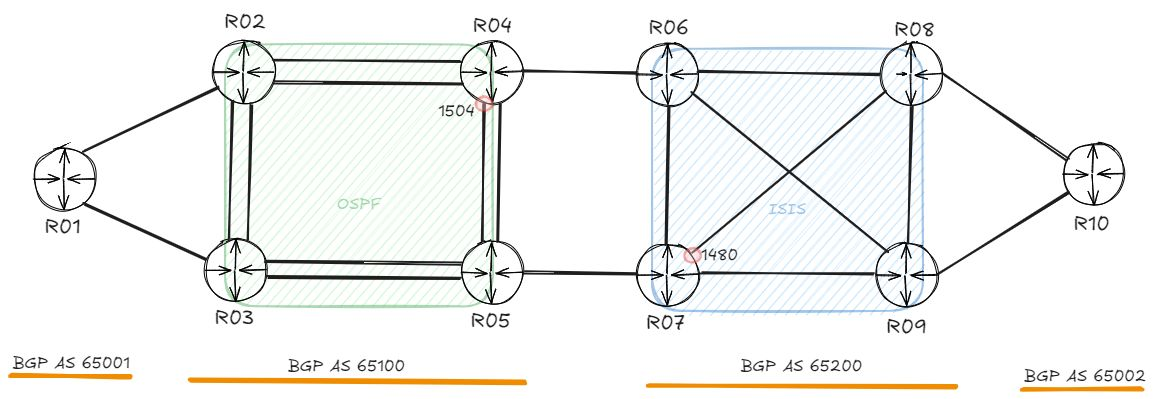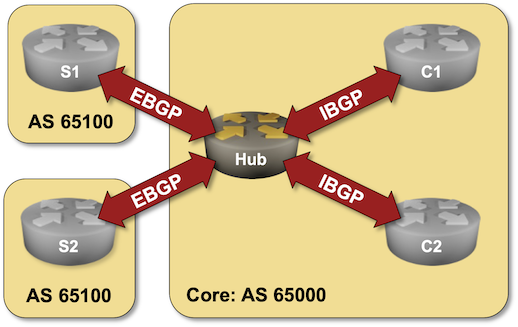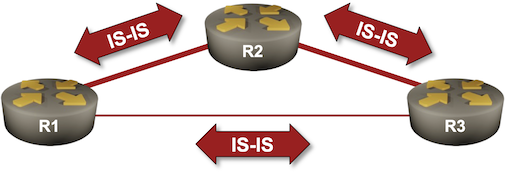Netlab Is Four Years Old
On December 9th, 2020, I created a new GitHub repository and pushed the first commit of my “I hate creating Vagrantfiles by hand” tool. It could create Vagrantfile and Ansible inventory from a (very rudimentary) network topology and deploy handcrafted device configurations on Cisco IOS and Arista EOS.
Worth Reading: Codespaces for Network Engineers
When I discovered GitHub Codespaces (thanks to a pointer by Roman Dodin), I did the absolute minimum of research to get netlab up and running in a container to enable Codespaces-based labs (BGP, IS-IS) and netlab examples.
However, if you want to know the behind-the-scenes details, you MUST read the Codespaces for Network Engineers and Educators deep dive by Julio Perez.
… updated on Friday, January 10, 2025 11:57 +0100
Is BGP PIC Edge an Oxymoron?
This blog post discusses an old arcane question that has been nagging me from the bottom of my Inbox for almost exactly four years. Please skip it if it sounds like Latin to you, but if you happen to be one of those readers who know what I’m talking about, I’d appreciate your comments.
Terminology first:
- Prefix Independent Convergence allows entries in the forwarding table to point to shared next hops (or next-hop groups), reducing the FIB update bottleneck when changing the next hop for a large number of prefixes (for example, when dealing with a core link failure). More details in the initial blog post and PIC applicability to fast reroute.
- PIC Edge (as defined by vendor marketing) is the ability to switch to a backup CE route advertised to a backup PE router before the network convergence is complete.
Here’s (in a nutshell) how PIC Edge is supposed to work:
… updated on Monday, December 16, 2024 18:13 +0100
netlab: Sample Cisco ASAv Topology
A happy netlab user asked for a sample Cisco ASAv topology that would include an inside and an outside router.
We don’t have anything similar in the netlab examples yet, so let’s build a simple topology with two routers, a firewall, and a few hosts.
However, we have to start with a few caveats:
Example: Multi-AS netlab Topology
A few weeks ago, Urs Baumann posted a nice example illustrating the power of netlab: a 10-router topology running OSPF, IS-IS, and BGP:

He didn’t post the underlying topology file, so let’s create a simple topology to build something similar.
Lab: Dual-Stack IS-IS Routing
Contrary to the OSPF world, where we have to use two completely different routing protocols to route IPv4 and IPv6 (unless you believe in the IPv4 address family in OSPFv3), IS-IS provided multi-protocol support from the very early days of its embracement by IETF. Adding IPv6 support was only a matter of a few extra TLVs, but even there, IETF gave us two incompatible ways of making IPv6 work with IS-IS.
Want to know more? You’ll find the details in the Dual-Stack (IPv4+IPv6) IS-IS Routing lab exercise.

IPv6 Support for Multiple Routers and Multiple Interfaces
Fernando Gont published an Individual Internet Draft (meaning it hasn’t been adopted by any IETF WG yet) describing the Problem Statement about IPv6 Support for Multiple Routers and Multiple Interfaces. It’s so nice to see someone finally acknowledging the full scope of the problem and describing it succinctly. However, I cannot help but point out that:
- I was ranting about that problem in 2009 (15 years ago) and did a summary of older rants in 2015.
- It was evident to everyone but the religious zealots that the only solution we have at the moment is either NAT (because stuff simply does not work otherwise) or host-based solutions that never got implemented (apart from a few rare cases of multipath TCP).
Anyway, Fernando wraps up his draft with:
EVPN Designs: EVPN IBGP over IPv4 EBGP
We’ll conclude the EVPN designs saga with the “most creative” design promoted by some networking vendors: running an IBGP session (carrying EVPN address family) between loopbacks advertised with EBGP IPv4 address family.

Oversimplified IBGP-over-EBGP design
There’s just a tiny gotcha in the above Works Best in PowerPoint diagram. IBGP assumes the BGP neighbors are in the same autonomous system while EBGP assumes they are in different autonomous systems. The usual way out of that OMG, I painted myself into a corner situation is to use BGP local AS functionality on the underlay EBGP session:
Dynamic BGP Peers
You might have an environment where a route reflector (or a route server) has dozens or hundreds of BGP peers. Configuring them by hand is a nightmare; you should either build a decent automation platform or use dynamic BGP neighbors – a feature you can practice in the next lab exercise.

Click here to start the lab in your browser using GitHub Codespaces (or set up your own lab infrastructure). After starting the lab environment, change the directory to session/9-dynamic and execute netlab up.
Lab: Using IS-IS Metrics
It’s time for another “the vendor IS-IS defaults are all wrong” blog post. Wide IS-IS metrics were standardized in RFC 3784 in June 2004, yet most vendors still use the ancient narrow metrics as the default setting.
Want to know more? The Using IS-IS Metrics lab exercise provides all the gory details.

Latency Numbers Every Programmer Should Know
One of the key arguments against stretched clusters (and similar stupidities) I used in my Disaster Recovery Myths presentation was the SSD read latency versus cross-site round-trip time.
Thanks to Networking Notes, I found a great infographic I can use in my next presentation (bonus points: it also works great in a terminal when fetched with curl) and a site that checks the latency of your web site from various vantage points.
Using a BGP Route Server in an Internet Exchange Point
A BGP route server is like a BGP route reflector but for EBGP sessions. In its simplest implementation, it receives BGP updates over EBGP sessions and propagates them over other EBGP sessions without inserting its own AS number in the AS path (more details).
BGP route servers are commonly used on Internet Exchange Points (IXPs), and that’s what you can practice in the BGP Route Server in an Internet Exchange Point lab exercise.

Click here to start the lab in your browser using GitHub Codespaces (or set up your own lab infrastructure). After starting the lab environment, change the directory to session/5-routeserver and execute netlab up.
Running Routing Protocols over Tunnels
James got confused by a statement made by Hannes Gredler in his IS-IS book:
Things behave really badly if the total IGP cost over the tunnel undermines the total topologies’ cost. What happens next is that the tunnel “wraps” around itself, ultimately causing a meltdown of the entire network.
Let’s unpack that, starting with “Why would you need a tunnel?”
netlab 1.9.2: STP, LAG, Cisco IOL, Edgeshark
While I was busy fixing bugs in the netlab release 1.9.2, other contributors added exciting new features:
- Jeroen van Bemmel added the spanning tree and link aggregation configuration modules, initially implemented on Arista EOS, Cumulus Linux, and FRR.
- Dan Partelly added the netlab exec command that can execute the same command on a set of network devices, support for Edgeshark, and support for Cisco IOS on Linux (IOL) and Cisco IOS layer-2 image on Linux (IOLL2), the latter after a heroic uphill battle with ancient software (part 1, part 2).
Other new features include:
Worth Reading: Creating a Tech Blog
Would you like to start a tech blog but don’t know how to do it? Ethan Banks put together a phenomenal how-to guide in his Developing Content & Gathering Research For Your Tech Blog article.
Oh, and please use Hugo (or similar) and use walled gardens like LinkedIn solely to post summaries and links to your content. You want to be in control and retain ownership of your work, right?
